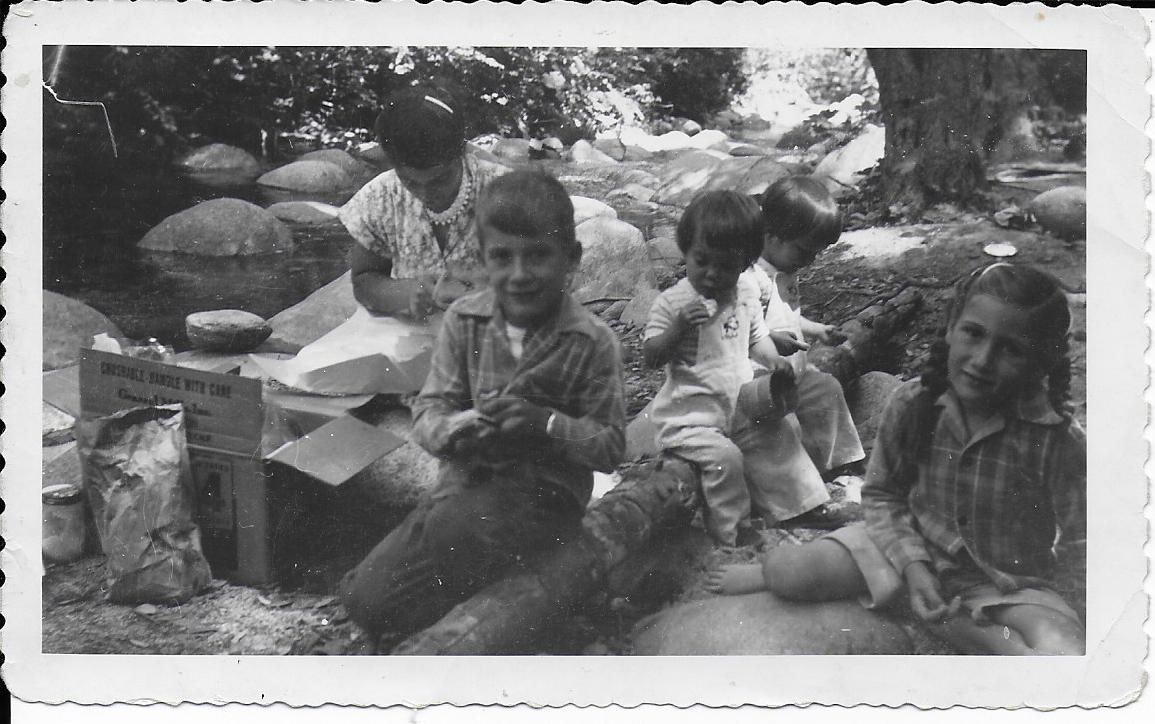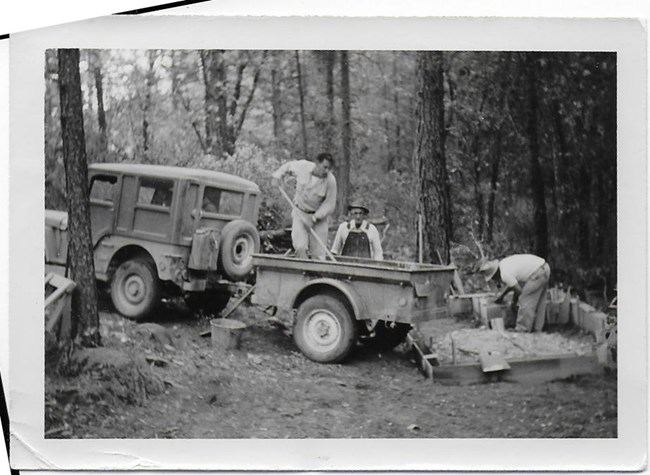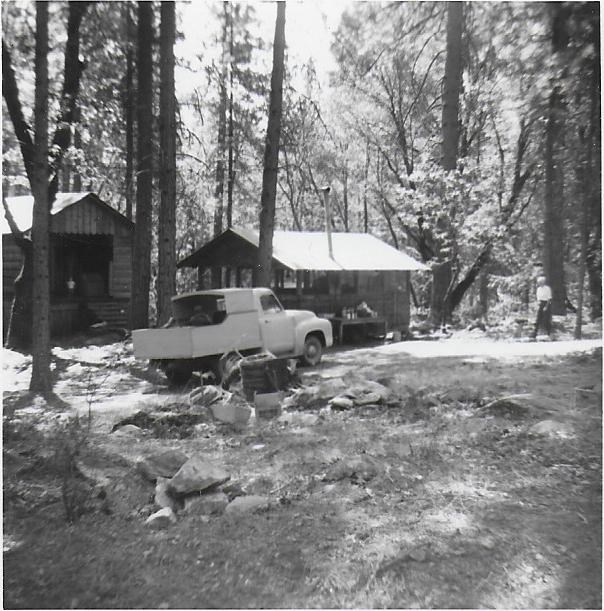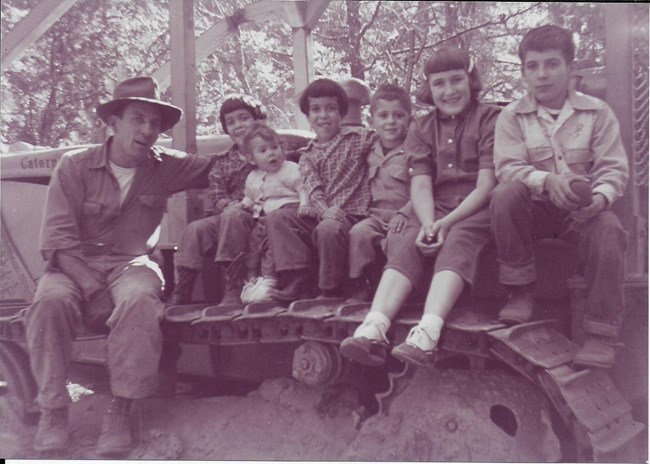
** The National Park Service is grateful to Sally Peltier Harvey, Judy Peltier McDonald, and Tim Peltier for sharing their family history and making this article possible. A cow mooing. A tree, just cut, making a loud thump as it falls and hits the earth. Nine children laughing and saying “Yummy” as they pick and eat juicy, ripe blackberries. A work truck driving across the metal, wooden bridge. And always, the subtle sound of the creek. If you were standing at the site of today’s Peltier Bridge Campground in the 1950s, these are some of the things you might hear. Peltier Bridge, Peltier Bridge Campground, and Peltier Valley Road are named after Clint Peltier (1912-1961) and Do-Be Peltier (1918-1998). The married couple purchased over 1200 acres of land in this area in the late 1940s. Clint was a timber cruiser, and over the course of the next two decades, the family used the property for cattle grazing, logging, and recreation. The Peltiers wintered their cattle on a ranch down in Igo, and every summer they drove their cattle to the higher country and lusher grasses of the Peltier Valley area. 
Clint, Do-Be, and their several kids spent substantial time on the property, including the entirety of certain summers. One of the children recalls that he essentially had his own private fishing retreat on what is now known as Paige Boulder Creek because the Paige family, who previously lived there, had formerly stocked the stream with Eastern brook trout. Clint himself created a fishing pond aside Clear Creek near what is now the Peltier Bridge Campground. 
The initial bridge that Clint built over Clear Creek washed away during winter floods. Having been a Sea Bee (member of the U.S. Navy Construction Force) during World War II, Clint decided to buy a Bailey Bridge. This type of bridge was developed by the British military in the early 1940s and was designed to be portable, pre-fabricated, and quickly built. The Bailey Bridge style was a truss bridge that was heavily used by engineers during the war. Clint searched around in newspaper advertisements and ended up finding a Bailey Bridge for sale in the State of Washington. Excitedly, he bought it, shipped it to Redding, and assembled it over Clear Creek. Clint’s Bailey Bridge, a humble bridge over Clear Creek that now bears his name, has not washed away since he first put it there! 
While Clint died in a house fire in Redding in 1961 when he was only 49 years old, Whiskeytown Lake and Dam were officially completed in 1963 and Whiskeytown National Recreation Area was formally established in 1965. Over the course of the next few years, National Park Service personnel worked to purchase the land around Whiskeytown Lake using the powers of eminent domain. The national recreation area was supported two-to-one locally, but for many of the locals that were actually forced to sell their land, there was bitterness and hard feelings. Do-Be did not want to give up the land that her family had worked and enjoyed for years. But she was forced to. The family had to move, but over half a century later, their spirit remains in the naming of Peltier Bridge, Peltier Bridge Campground, and Peltier Valley Road. * Article written by Scott Einberger, Interpretation Supervisor, Whiskeytown National Recreation Area, November 2021 |
Last updated: November 23, 2021
